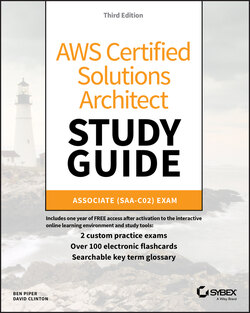Читать книгу AWS Certified Solutions Architect Study Guide - Ben Piper, David Higby Clinton - Страница 58
Instance Pricing
ОглавлениеYou can purchase the use of EC2 instances through one of three models.
For always‐on deployments that you expect to run for less than 12 months, you'll normally pay for each hour your instance is running through the on‐demand model. On‐demand is the most flexible way to consume EC2 resources since you're able to closely control how much you pay by stopping and starting your instances according to your need. But, per hour, it's also the most expensive.
If you're planning to keep the lights burning 24/7 for more than a year, then you'll enjoy a significant discount by purchasing a reserve instance—generally over a term commitment of between one and three years. You can pay up front for the entire term of a reserve instance or, for incrementally higher rates, either partially up front and the rest in monthly charges or entirely through monthly charges. Table 2.2 gives you a sense of how costs can change between models. These estimates assume a Linux platform, all up‐front payments, and default tenancy. Actual costs may vary over time and between regions.
TABLE 2.2 Pricing estimates comparing on‐demand with reserve costs
| Instance type | Pricing model | Cost/hour | Cost/year |
|---|---|---|---|
| t2.micro | On‐demand | $0.0116 | $102.00 |
| t2.micro | Reserve (three‐year term) | $38.33 | |
| g3.4xlarge | On‐demand | $1.14 | $9986.40 |
| g3.4xlarge | Reserve (three‐year term) | $4429.66 |
For workloads that can withstand unexpected disruption (like computation‐intensive genome research applications), purchasing instances on Amazon's spot market can save you a lot of money. The idea is that you enter a maximum dollar‐value bid for an instance type running in a particular region. The next time an instance in that region becomes available at a per‐hour rate that's equal to or below your bid, it'll be launched using the AMI and launch template you specified. Once up, the instance will keep running either until you stop it—when your workload completes, for example—or until the instance's per‐hour rate rises above your maximum bid. You'll learn more about the spot market and reserve instances in Chapter 13, “The Cost Optimization Pillar.”
It will often make sense to combine multiple models within a single application infrastructure. An online store might, for instance, purchase one or two reserve instances to cover its normal customer demand but also allow autoscaling to automatically launch on‐demand instances during periods of unusually high demand.
Use Exercise 2.3 to dive deeper into EC2 pricing.
